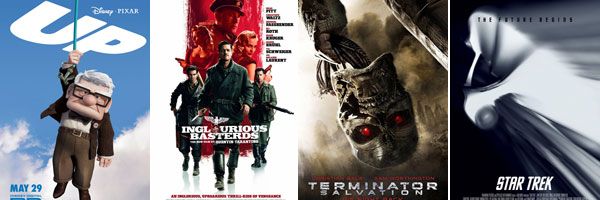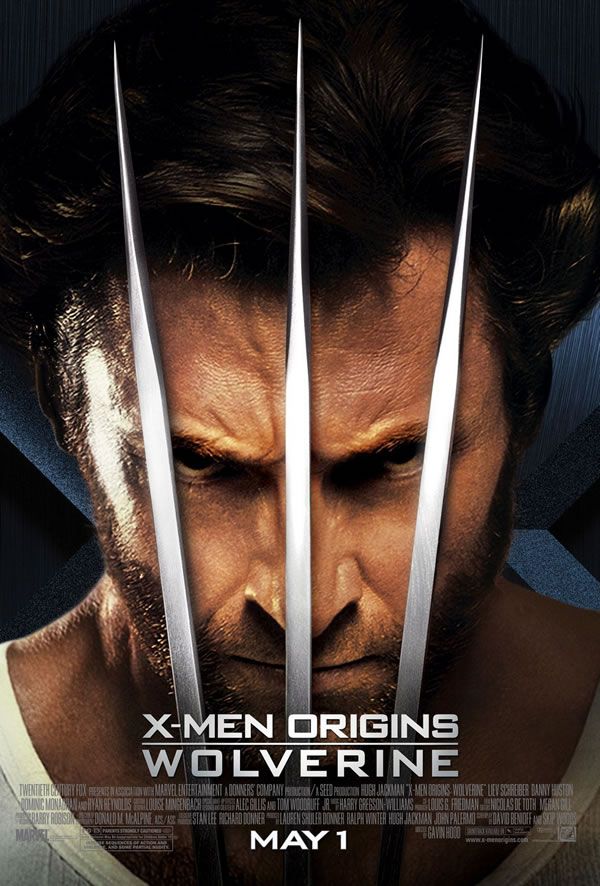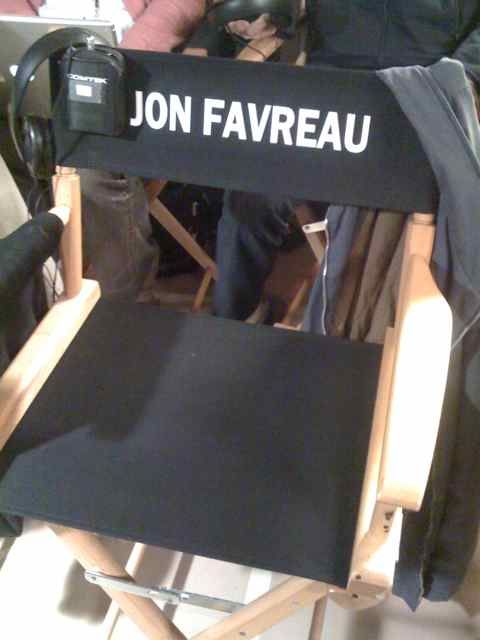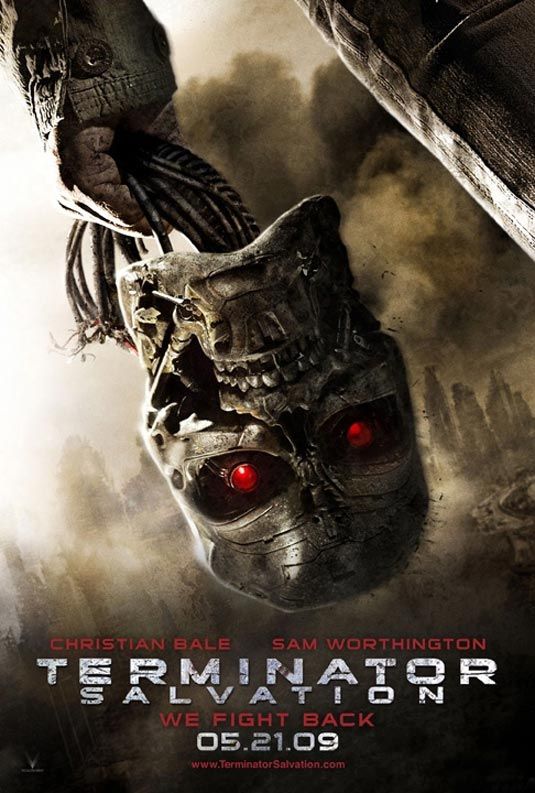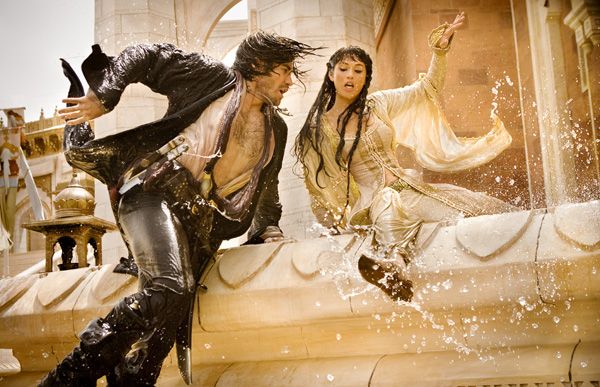The 2009 film industry highlight reel is fun to watch. You are reminded of the $10 billion in ticket sales. The negative impact of the economy on specialty films. The $4 billion Disney-Marvel acquisition. But a highlight reel, while succinctly packaged and easy to reference, lacks the most essential element of film-a story. In a recent interview with The New York Times, Star Trek and Transformers: Revenge of the Fallen co-writer Roberto Orci stressed the necessity of crafting a solid story in order to create a compelling film. "If you can't take out the gimmick and still have a story, then you don't have anything," he said. Setting aside for the time being the fact that Orci seemingly ignored his own advice during the writing of Transformers 2, he is right-a good story is essential if viewers are to remember the film after the lights are raised. So, what story can be told of the film industry in 2009? The story, as I see it, is Hollywood's realization that it must do a better job of protecting the financial viability of franchise films from being undermined by an increasingly voracious and savvy viewing public that is constantly searching for a greater degree of access to and control over the film properties to which they have become attached.
Hollywood has been fighting against an audience ravenous for insider information and perfectly willing to cross legal boundaries for decades but only recently has the public acquired the means to not only discover production and plot secrets but to also view and disseminate the entire film prior to release. The online release of a stolen, non-watermarked workprint of Wolverine marked a decisive defeat for Hollywood studios. The piracy was punctuated by former FoxNews.com entertainment writer Roger Friedman reviewing the movie after he downloaded it. Friedman's foolishness cannot be easily excused but it was driven in large part by the simple fact that there is a growing desire on the part of prospective viewers to have as much information as possible about a film before seeing it. Friedman delivered when his review hit the web almost a full month before the film's release.
This near-insatiable thirst for information is why the average movie-goer now exerts more influence over the film industry than ever before. And that is saying something considering studios already use test-screenings, focus-groups, outside consulting firms and even discreet monitoring of message boards to try and create the most appealing film possible. Thanks to newly popularized social platforms like Twitter audience opinion is near ubiquitous.
Word of mouth has always been a major factor in the success or failure of a film. In the good old days (read: pre-90s) informal reviews of new films would be passed along at the water cooler, after homeroom or just during a casual phone conversation. Recently, through the glory of the interwebs and sites like RottenTomatoes, prospective movie-goers were able to get a more comprehensive feel for what was in store. But this year, Twitter did its best Dark Helmet impression and moved things into ridiculous speed. Thanks to the rapid increase of Twitter users, audience satisfaction was reflected in a film's box office not the week after release but as soon as the next day. The much anticipated Bruno discovered this the hard way, it's Saturday gross of $8.8 million falling off nearly 40% from Friday's strong $14.4 million opening, a precipitous drop made all the more stunning considering Saturday grosses are traditionally larger than those from Friday. On the flip side, Inglourious Basterds was well-tweeted and reaped the benefits, all $38.1 million of them.
Never shy to jump on a bandwagon, Hollywood began to use Twitter to its own advantage. Stan Lee twittered the details of his Thor cameo and Jon Favreau released set photos from Iron Man 2 on Twitter. Of course, no self-respecting director or studio chief would ever tweet any vital information about an upcoming film. If all the juicy details of a film were revealed prior to release, the fleeting satisfaction of the prospective audience only serves to hurt the studio's financial bottom line. The obvious solution is to wrap productions in a varying degrees of secrecy and to slowly market the film through trailers, press visits, etc. to build up anticipation for the hidden final product. That is why Michael Bay, following the advice of Steven Spielberg, did not reveal the full transformation process of the Autobots or Decepticons in trailers for the first Transformers and it is also why Christopher Nolan routinely issues a strict gag order to the cast and crew of his films.
Accomplished directors like Nolan understand that the amazing thing about cinema is the potential that almost any given film has to become a spectacle, to take viewers into a story they could never have imagined and, through the shared experience of watching the movie, have those same viewers leave the theater with a wispy, but not transient, bond to each other. The viability of the film industry is predicated on the hope of the viewing public that the film they pay good money to see will not be redundant, overly confusing or full of poor acting and CGI but, instead, a story and visuals that allow them to escape and live in another world and another life for while. When a film is able to achieve that, inevitably, there is talk of a sequel. And that, therein, lies the problem.
Though studios and directors try to control the flow of information about sequels, the aggressive pursuit of information by the fans is possibly too strong. Of the year's top 20 films at the box office, 11 were sequels are reboots. Of those 11, only 5 were rated as "Certified Fresh" by the community rankings at RottenTomatoes and only 3 received that certification by the regular critics. In other words, the sequels were unable to deliver the same spectacle as their predecessors. That might not be very surprising but it is important to remember. In the current economic climate Hollywood will be more tempted to rely on sequels at the expense of investing in riskier, albeit original, stories. This is a lose-lose situation for both studios and audiences. If an embarrassment of money is spent on a sequel and fans follow the production every step of the way what happens? Studios put out movies like X-Men Origins: Wolverine, a film which, domestically, barely made back its production budget and disappointed critics and fans.
Hollywood seems to have forgotten that a multiplex is not a field of dreams. Just putting the movie out there is not enough to secure an audience. That type of thinking resulted in Batman and Robin and a decade (and counting) of ridicule. Right now, the growth of 3-D seems to be softening the impact of underperforming films like Wolverine and Terminator: Salvation. Even so, 3-D, while it has come a long way has yet to prove itself as anything more than a very stylish and sleekly packaged gimmick. While 3-D enhanced films like Avatar, Coraline, and Up, those films were heavily, if not entirely, dependent on animation, be it stop-motion or computer generated. 3-D has yet to prove that it can be embraced outside of the animated world. Is 3-D really going to make a difference when I watch the next Jackass? Or Robin Hood, a film which was not even made with 3-D in mind? Hollywood recognizes that audiences in the Information Age are almost jaded by the time they buy a ticket and that it needs to do something to make movie watching an event again. To that end, studios will begin using 3-D more widely in order to reapply a sheen of newness and originality to an industry that is often criticized for relying too heavily on retreads. Retreads like Jackass. Or Robin Hood.
In 2010 and beyond Hollywood needs to do a better job of protecting its franchises from overexposure. The financial windfall from those films are what allow riskier, original scripts to be produced and distributed. If Sony had not been confident of the hundreds of millions that Angels and Demons was set to deliver, they may not have picked up a deserving title like Moon. For Hollywood to stay financially as well as creatively viable, it needs to take a good, hard look at the piracy, twittering and general lackluster reception of franchise installments that occurred in 2009. Though ostensible tentpoles like Unstoppable or The A-Team may not break even domestically they have the star power to result in high overseas grosses Thanks to the technical complications inherent in 3-D, piracy of major films will be made that much more difficult. As far as franchise fatigue goes, a new marketing approach may be in order. Since audiences will ultimately decide if Prince of Persia: The Sands of Time is going to be a national event, perhaps it makes more sense to not frontload the marketing of it. Doing so not only drains money that could be better used for a second push that will sustain box office legs but it will also prevent the film and its acrobatics from reaching an unnecessary media saturation. Finally, and most importantly, if Hollywood intends to make 3-D the future, studios need to follow James Cameron's lead and use it to actually enhance their films and not just to make them shiny. Like Orci said, a good story, not a slick gimmick, is the key to success.


